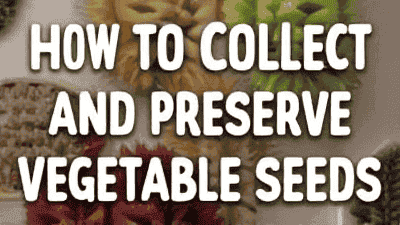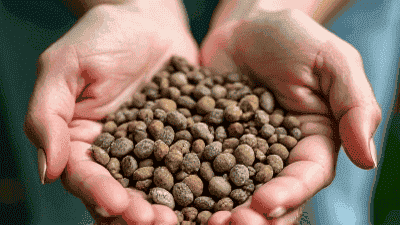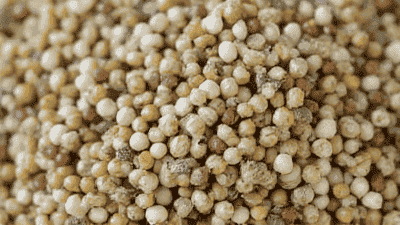
Gardening enthusiasts often find a special satisfaction in collecting and preserving seeds from their own plants. This process not only allows gardeners to save money but also helps ensure the continuity of their favorite varieties from year to year. Whether you are an experienced gardener or just starting, learning how to collect and preserve vegetable seeds can be a rewarding project that enhances your gardening experience.
Before delving into the methods of seed collection and preservation, it is essential to understand why saving seeds is beneficial. There are several advantages to this practice:
Collecting seeds from your own vegetables can save you money. Instead of purchasing new seeds every season, you can rely on your stockpile of harvested seeds, reducing your gardening expenses.
By saving seeds, you contribute to the preservation of heirloom and open-pollinated varieties that may not be readily available commercially. Many heirloom varieties have unique flavors and qualities that make them valuable to gardeners and cooks alike.
Vegetables grown from seeds that were collected in your own garden are often better adapted to your local climate and soil conditions. This can lead to improved growth and yield.
The process of seed saving provides an educational opportunity for gardeners of all ages. It teaches patience, responsibility, and an understanding of plant life cycles.

Not all vegetables are suitable for seed saving. To ensure successful seed collection, it is essential to choose the right types of vegetables.
Focusing on open-pollinated varieties is crucial for successful seed saving. Open-pollinated plants can produce seeds that breed true, meaning that the seeds will produce plants similar to the parent. In contrast, hybrid varieties are often bred for specific traits and may not produce true-to-type offspring. Therefore, it is best to avoid saving seeds from hybrid vegetables if you want to maintain the characteristics of your favorite plants.
Some vegetables are more suitable for seed saving than others. Here are some common choices that are easy to save seeds from:
Tomatoes: They are one of the most popular vegetables for seed saving due to their ease of collection and diversity of varieties.
Peppers: Both sweet and hot peppers are great candidates for seed saving.
Beans: Commonly grown varieties such as bush beans and pole beans are excellent for seed saving.
Lettuce: Leafy greens typically produce abundant seeds and can easily be saved.
Radishes: These fast-growing vegetables have a straightforward seed collection process.
Cucumbers: As long as you allow a few fruits to mature fully, cucumber seeds are relatively easy to save.
Squash: Summer and winter squash varieties can be saved, but make sure to select open-pollinated types.
Carrots: Although carrots take a bit longer to mature, they can produce viable seeds if allowed to flower.
Now that you have identified which vegetables to save seeds from, it's time to learn how to collect them properly. Each type of vegetable may have slightly different collection methods, so here are general steps to follow:
Timing is critical when it comes to seed collection. Seeds should only be collected from mature, healthy plants. The best time to harvest seeds is when the fruits or flowers have fully matured but before they have begun to break down or decompose.
For fleshy fruits like tomatoes and peppers, seeds should be collected once the fruit has reached its peak ripeness and changed color.
For dry seed crops such as beans and peas, wait until the pods turn brown and dry on the plant.
For leafy greens and flowers like lettuce and radishes, collect seeds once the seed heads turn brown and dry.
Gather Necessary Supplies: Before you begin, collect the necessary tools, including scissors or pruners for cutting, paper bags or envelopes for collecting seeds, and labels for organization.
Harvest the Seeds: Carefully cut or twist off mature fruits or seed heads. Avoid damaging the plant as much as possible, especially if you want more fruits or leaves.
Remove Seeds: For fleshy vegetables, scoop out the seeds along with some surrounding pulp. For dry seeds, simply collect the seeds from pods or flower heads.
Separate Seeds from Pulp: If you are collecting seeds from fleshy fruits, rinse the seeds in water to remove pulp and debris. This may require some vigorous shaking and rinsing.
Dry in Shade: Spread the seeds out on a clean surface, such as a paper towel or screen, in a cool, dry place away from direct sunlight. Allow them to air dry thoroughly, which may take several days.

After collecting the seeds and ensuring they are dry, it is time to focus on proper preservation methods. This step is crucial to maintain seed viability for future growing seasons.
Clean Seeds: Ensure seeds are completely clean before storing them to prevent mold and deterioration. For sticky seeds, use a screen or sieve to help separate any remaining debris.
Labeling: Clearly label each packet with the seed type, variety, collection date, and any additional notes to help you remember details for future planting.
Paper Envelopes: Use paper envelopes for short-term seed storage. These options allow for good airflow, preventing moisture buildup.
Glass Jars: For long-term storage, consider using glass jars with airtight seals. Jars offer excellent protection against pests and moisture.
Plastic Bags: Resealable plastic bags can be used, but ensure they are kept in a cool, dry location. Avoid using bags that are too thick or opaque, as moisture can accumulate.
Cool Temperature: Store seeds in a cool place, ideally between 32 and 41 degrees Fahrenheit (0 to 5 degrees Celsius). The refrigerator is often a suitable option for extended storage.
Low Humidity: Keep seeds in a low-humidity environment to prevent mold and decay. Including a desiccant packet or silica gel can help absorb excess moisture.
Darkness: Darkness is essential for seed storage. Avoid exposing seeds to light, as it can degrade their viability over time.
Before planting saved seeds, it is wise to test their viability to ensure they will germinate effectively. This step saves time and effort, preventing disappointment in the garden.
Gather Supplies: You will need seeds to test, paper towels, a plastic bag or container, and water.
Moisten Paper Towels: Dampen a few paper towels and place seeds evenly spaced on one half of the towel.
Fold and Seal: Fold the towel over the seeds to cover them. Place the towel inside a plastic bag or container to retain moisture.
Monitor Germination: Keep the seeds in a warm location, checking for germination every few days. After a week or two, count the number of seeds that have sprouted.
Calculate Viability: Divide the number of sprouted seeds by the total number of seeds tested and multiply by 100 to determine the percentage of viability.

While seed saving can be a straightforward process, certain challenges may arise. Here are some common problems and their solutions.
Insect Damage: Insects can infest your seeds during collection and storage. Regularly inspect and maintain cleanliness in your workspace and storage.
Fungal Issues: Avoid planting damp seeds, as moisture can encourage fungal growth. Always dry seeds thoroughly before storage.
Old Seeds: Seeds that have been stored for too long may have reduced viability. Use fresh seeds whenever possible for better germination rates.
Improper Storage Conditions: If seeds have been exposed to heat, moisture, or light during storage, they may not germinate effectively. Ensure the ideal storage conditions are met to preserve seed quality.
Collecting and preserving vegetable seeds is a gratifying process that enhances gardening skills and fosters sustainability. By following the steps outlined in this guide, you can successfully save seeds from your favorite vegetables, contributing to your garden's diversity for years to come. Remember to choose appropriate varieties, practice careful seed collection, ensure proper storage conditions, and monitor seed viability before planting.
With patience and diligence, you will gain the satisfaction of cultivating a thriving vegetable garden enriched with seedlings grown from your own collected seeds. Through these practices, you contribute to biodiversity and help preserve various plant varieties for future generations of gardeners.